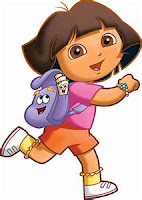
What stand would you take if you had to decide if the media influenced prosocial or antisocial behaviors? Personally I think this is a trick question because it portrays both types of behaviors. Almost in any television show or movie or game or any other form of media you can pick out one of the two behaviors. As a viewer you have to decide how you are going to decipher the information being presented to you.
Truthfully as a society we can complain all we want about the negative influences that the media presents, but when we choose to watch television shows that shine a light into bad behavior such as violence and sex it is solely our fault. There are going to be negative scenarios placed in front of us but I think it is our job to teach how to be above the influence. In a perfect world, people would see the bad and want to do good; and see the good and want to do better. But the reality of it is, is that we live in an imperfect world and constantly tempted to do badly. How can we make it seem like doing right is just as much fun as doing wrong?
Media is always going to present a side that someone finds offensive, it is simply the way of life. If we cannot eliminate the antisocial behaviors entirely off of the media, we can certainly push to not support it as a society. Little steps can be made to move towards prosocial behaviors, which I believe would better the society as a whole! I know I will make the steps needed to better future generations behaviors... will you?






